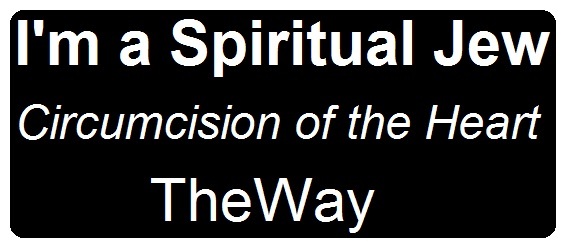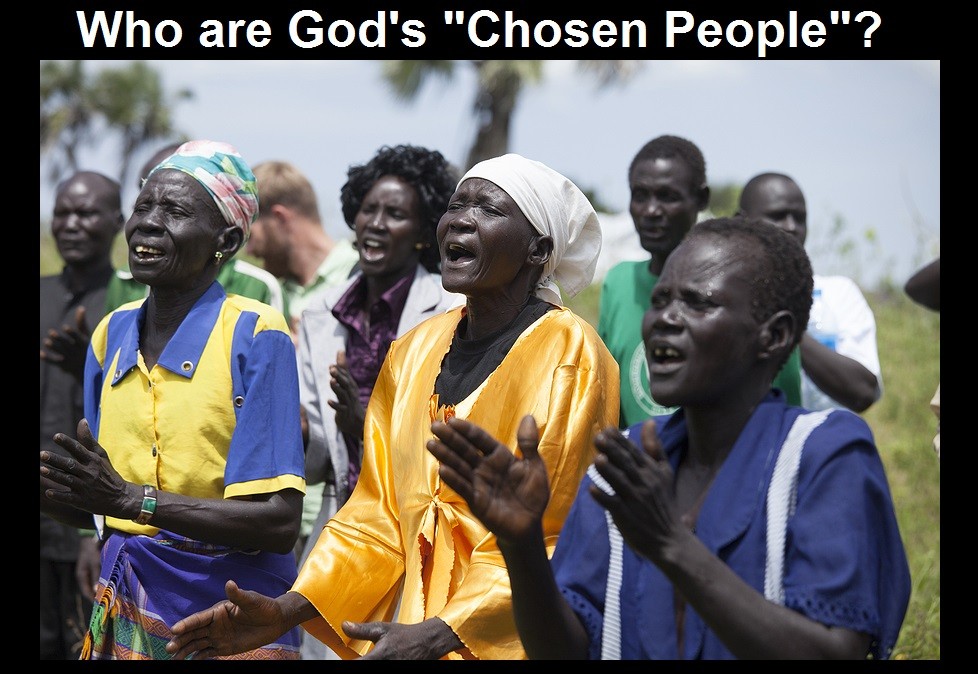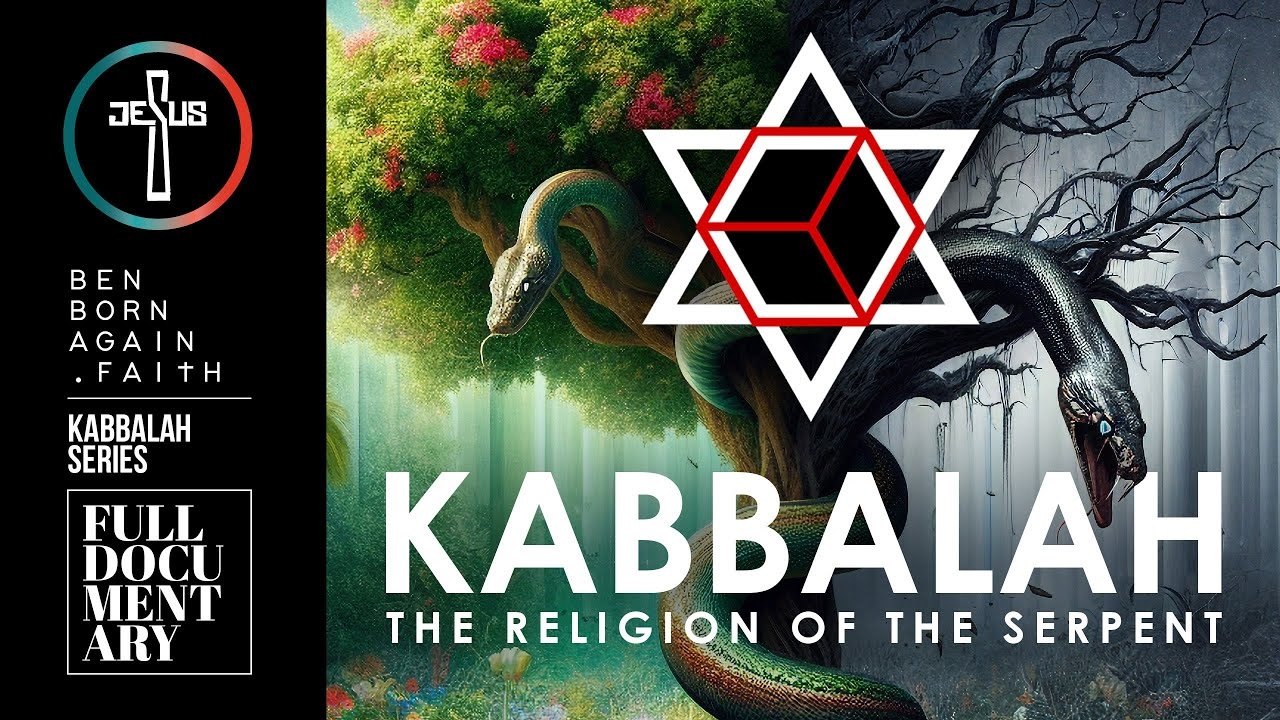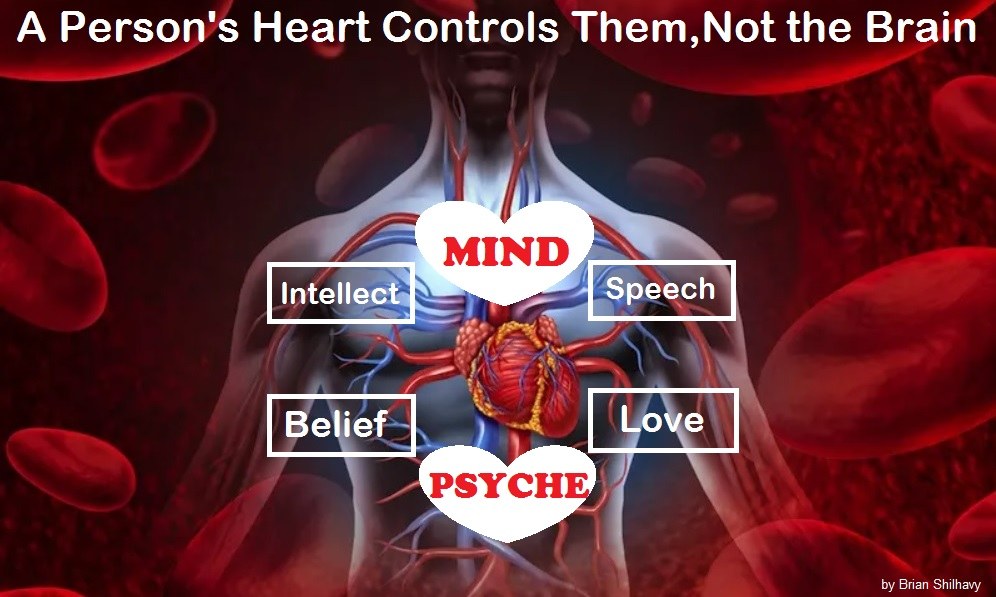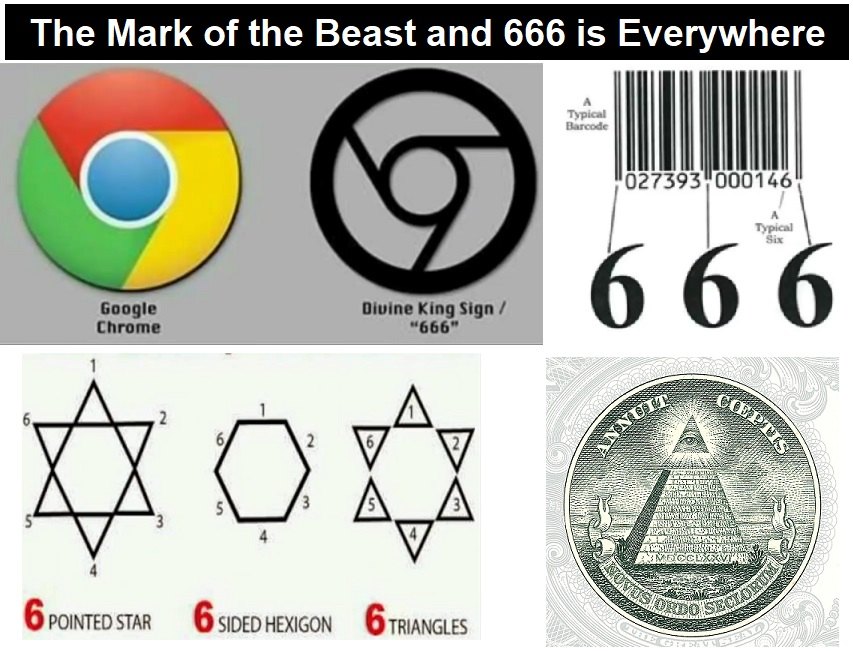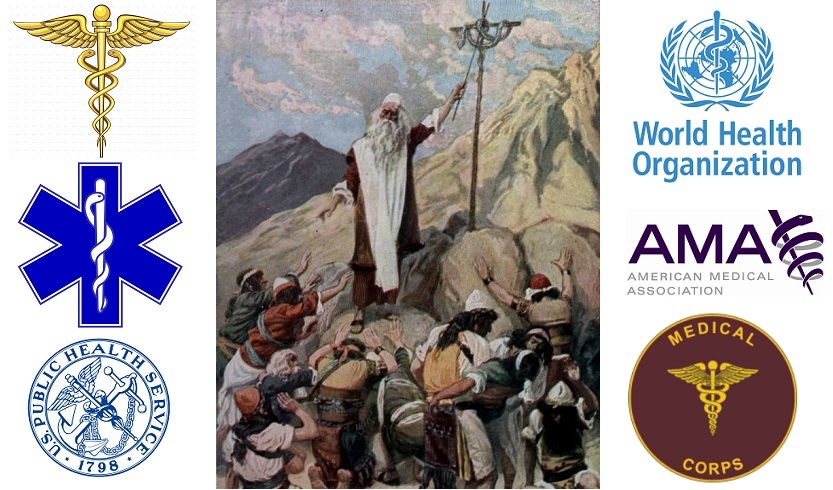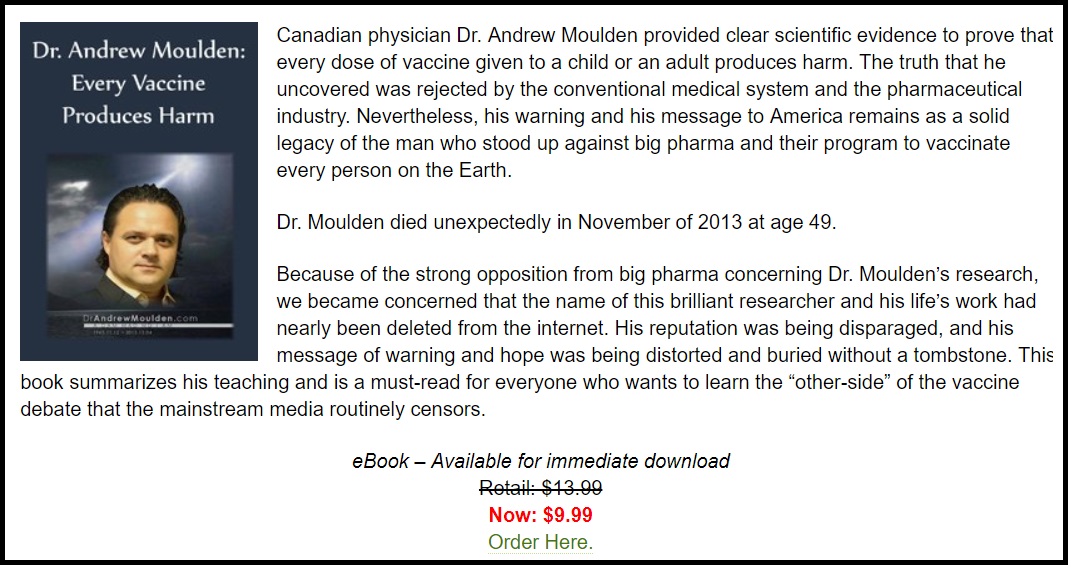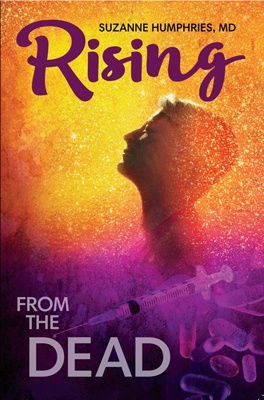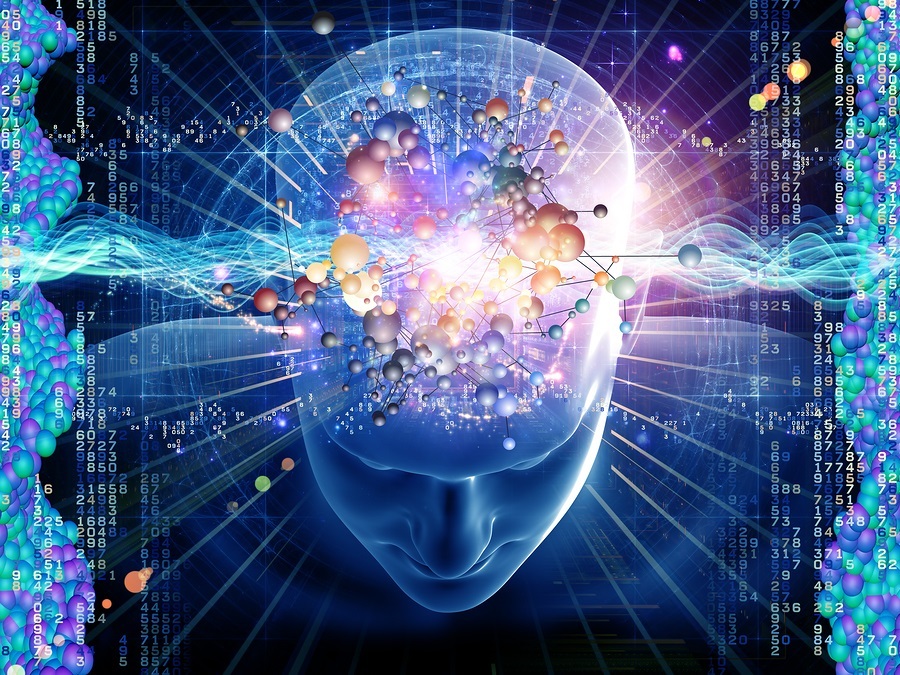
Comments by Brian Shilhavy
Editor, Health Impact News
I think it is time for us to republish an article we published back in 2014 by Dr. David Stewart, who so eloquently articulated the limitations of the scientific method, and the short-comings of the medical paradigm.
Today here in 2021, we are witnessing an unparalleled phenomenon in medicine where religious beliefs are passed off as “science,” while indoctrination of ideas is actually the goal of the Globalist medical tyranny programs.
Most of the public is falling for this indoctrination propaganda passed off as “science,” so Dr. Stewart’s words are more needed today than perhaps ever before.
The Limits of Science
by Dr. David Stewart
The Chemistry of Essential Oils
Science has lifted us from the ignorance of the Dark Ages into the understandings we hold today. It has increased our standards of living, lengthened our life spans, and enriched our lives in every way.
Music, the arts, our governments, our social customs, our religious beliefs, our educational institutions, our recreations, our modes of travel, our means of communicating, our working, our eating, our sleeping—all aspects of our culture have been transformed by the touch of technology.
It is little wonder, then, that we have become conditioned to look to science for the solutions of all our problems and for the answers to life’s questions.
But science, powerful as it is, is a false god. Awed by the spectacular material advancements science has brought us, we have come to expect more of science than it is capable of delivering.
Many individuals, not recognizing the limitations of science, stand in expectation of results that will never come.
Science does not have all the solutions. It does not have all the answers. It never has and it never will.
The purpose of this [article] is to clearly present science for what it is—no more and no less. Many answers can be obtained by the scientific method, but there are many more that cannot.
It is not my intent to destroy your faith in science. As a lifetime professional scientist myself, I am duly respectful of its potential. I am also aware of its limitations.
When it comes to consideration of life in its fullness, these limitations are very great. Therefore, while I don’t want to destroy your faith in science, I do want to disturb it and to encourage you to question its validity as an approach to living.
While the essence of science is characterized by its inherent lack of mysticism, to the non-scientist it often bears a veil of the mystical.
One of the most common persuasive devices of the advertiser is to cloak its advocacy in the jargon of science: “If it sounds scientific, it must be right,” so goes the unspoken implication.
And people buy it. It is my hope that this writing will serve to demystify science for those unfamiliar with its inner workings. It is not in our best interest, as human beings, to hold science in a degree of esteem that exceeds its capabilities.
Science is not the only approach of inquiry into the nature of life. In fact, it is an approach that fails in most of life’s situations.
While it has great capabilities, it can only do so much and no more. This [article] will assist you in obtaining a realistic expectation of science, because without a realistic expectation you will not be able to rely upon it when appropriate and you will be disappointed when it fails.
Science may be a high-speed aircraft in some ways, but an airplane cannot get you everywhere. If you want to walk about your home, visit a neighbor, enjoy a stroll through the woods, climb the heights of a mountain, fish in your favorite stream, or travel to places without airports, you cannot do it with an aircraft.
Modes of locomotion must be appropriate to the circumstances. Likewise, modes of inquiry must be appropriate to the subject matter. In the case of the scientific mode of inquiry, it is inappropriate to most of life’s important questions.
For example, when someone smiles at you, do you need a blood test and a urinalysis to appreciate why they smiled at you? Of course not. You simply look them in the eyes with an open heart and you know.
In order to clearly understand the limitations of science, one must first have a clear picture of what science is. Interestingly enough, there is a large fraction of scientists who do not have an accurate and complete picture of the boundaries of science.
This might sound hard to believe, but it is true. It is entirely possible to practice science to a high level of success in obtaining useful, valid results, while at the same time never being fully aware of its limits.
In an analogous way, it is entirely possible, if not common, for doctors to practice medicine without being aware of its limits. In fact, it is not at all uncommon for people to confuse medicine with science. And neither is it unusual for doctors to confuse science with technology.
The practice of medicine, while it may be partially described as “applied technology,” is not a science.
While medicine bases some of its practices on scientifically derived data, the practice of medicine is not, itself, a science. Medicine is a discipline of opinion where accepted standards of practice are determined by a consensus of the majority, not by the scientific method.
The reason the limits of science are not widely recognized and understood lies in our educational systems, which train scientists and health care providers in how to exercise the methods of science and apply their results, but do not encourage a questioning of the fundamental assumptions behind the methods themselves.
The purpose of medical training is unquestioning indoctrination, not cognitive education. It is to promote, protect, and apply the prevailing paradigm—not to question it.
The Limits of Science in a Nutshell
The limits of science can be condensed into the following nineteen statements:
1. Science explains nothing; it can only describe.
2. Science proves nothing; it can only verify or disprove.
3. Science cannot deal directly with subjective experience; it can only deal with the objective.
4. “Scientific” does not necessarily mean right, valid, or best; it only means that a certain method was followed.
5. “Objective” does not necessarily mean right, valid or best; it only means that observations are independent of the observer and can be measured scientifically.
6. “Subjective” does not mean invalid or irrelevant; it only means that observations are dependent upon the observer and cannot be measured scientifically.
7. Most of the things we experience and value in life are subjective and are, therefore, beyond science.
8. Belief in science is an act of faith and is, in itself, a choice made subjectively and personally, not scientifically.
9. Science is limited by time; tomorrow’s research cannot help us today and yesterday’s events cannot be directly observed.
10. Science is limited in space in the infinite sense; there will always remain portions of the universe beyond its reach because of distance to the furthest reaches of intergalactic space.
11. Science is limited in space in the infinitesimal sense; there will always remain portions of the universe beyond its reach within the subspace and the subparticles of atoms.
12. Science is limited in its ability to observe natural living processes because the effect of the observer changes, if not halts, the process.
13. Science is limited by its instruments and apparati of observation. It can only study that which its apparati are designed to observe or detect.
14. Science is limited by experimental error; its results can be no better than the reliability of its data.
15. Science is limited by human bias in the application of the scientific method itself.
16. Science is limited by human bias in the choices of topics upon which the method is applied.
17. Science is limited in its impact upon society in that people, and even professionals, generally do not follow scientific facts unless the facts agree with their feelings and/or preheld beliefs.
18. The scientific method is not the only valid method of inquiry into the nature of things—there are others, and when it comes to practical inquiry into the subjective, other methods must be used because, in such experiences, science fails.
19. Science (as practiced today) is limited by the a priori assumption that there is no willful, conscious, participating God within the processes studied by science. Hence, God is not a factor to be considered.
What is Science?
Science, as discussed in this section, is an intellectual left-brain process dependent upon the five physical senses.
This is the predominant science as defined and practiced today. We call it “materialistic science.”
There is also another definition of science that is intuitive and right-brained that does not depend upon the five physical senses. But in this discussion, we are referring to science as the vast majority of scientists currently understand it and practice it.
Science is an approach to the study of the universe around us—both living and inanimate. It is only one of several approaches.
The purpose of science is to discover and describe the details of the universe. It does not attempt to explain, in an ultimate sense, why things are the way they are. Science merely observes and describes.
For example, Newton’s Second Law states that force (F) is equal to mass (m) times acceleration (a). Or in the form of an equation: F = ma.
The law does not explain why force, mass, and acceleration are so related. It merely states that between these three quantities, that is the way it is. It is only a description of what scientific observations have seen time and time again.
Newton’s observation (stated as his second law) is no different than stating that “the average length of human pregnancies is nine months.”
If you ask a medical scientist why pregnancies last this long, they may reply, “Because this is how long it takes the fetus to develop into a stage where it is able to live outside the womb and yet is not too large to pass through the birth canal.”
But this is not really “why” in an ultimate sense. To really answer the question of “why?” one would have to explain why fetal development progresses at the rate that it does.
A medical scientist might be tempted to answer this by going into the chemistry and embryology of fetal processes and how these occur in a certain sequence over a certain period resulting in a mean gestation period of nine months.
But here, again, one would merely have explained “how” the growth rates resulted, not “why.”
At this point we could ask, “Why do these chemical and biological processes proceed at the rates and in the manners in which they do?” Trying to track down an ultimate “why” in this manner is endless.
This is the reason that science does not concern itself with such considerations.
In the field of aromatherapy and essential oils, one could state as a scientific fact, derived from the data of many scientific analyses, that marjoram oil (Origanum marjorana) generally contains 14-21% phenols, 28-60% monoterpenes, and 2-5% sesquiterpenes.
If you asked a biochemist why marjoram contains these types of compounds in these proportions, he or she may attempt to reply that it is due to its genetics as a member of the mint family (Lamiaceae) and because of its inbred habits of taking certain minerals from the air, water, and soil to create compounds in a certain manner in response to its environmental and nutritional needs, etc., etc.
Thus, one might describe how marjoram makes the oils it makes. But none of these explanations would answer why marjoram behaves like marjoram to produce the oils it produces. “Why” is not a question that left-brain science can ever address to obtain an ultimate and final answer.
Therefore, one of the principle features that distinguishes science from other approaches to life’s problems is the problems to which science limits itself.
In other words, science is concerned only with “what, when, and how.”
When we ask, “Why?”, and require an ultimate answer, we have left traditional science and have entered realms that are more properly relegated to philosophy, religion, intuition, and personal subjective judgment.
Consequently, the first limitation of science is that it does not deal with absolutes. It does not deal with “truth.” It deals with facts, as perceived, but not with absolute truth.
Hence, the first hope we must give up for the scientific method is that it will lead us to absolute answers about life and the universe. It cannot.
In addition to being restricted only to certain questions, science is further restricted by the approach it takes to finding answers to those questions.
This approach is called the “scientific method.” We shall describe this a bit later.
First, let us further pursue the degree to which science is capable of dealing with “truth.” In particular, let us explore the real meaning of the phrase, “scientific proof.”
What is Proof?
Absolute proof is strictly the domain of logicians. In mathematics, for example, once a theorem is proven it is proven for all time and all circumstances.
Mathematical proof is absolute. Mathematics, however, is not science.
This is a point about which many are confused. Mathematics is a language used by science, but is not itself a science. Mathematical proof and scientific proof are not the same thing at all.
To see this point more clearly, consider the Pythagorean Theorem—a mathematical proof that relates the lengths of the sides (a & b) of a right triangle to the length of its hypotenuse (c). (See the figure above.)
This theorem was proven thousands of years ago once and for all time. We needn’t worry that tomorrow a right triangle may be discovered that disproves the theorem.
Neither should we be concerned that the theorem was proven in Greece and, therefore, may or may not apply to the United States or to astronauts on another planet.
Proof of the Pythagorean Theorem is absolute—valid for all times and places. In mathematics, once proven is always proven. This is not so in science.
The reason that mathematicians can prove their theorems absolutely is because their universe of mathematics is a creation of human consciousness. The elements of this universe (numbers, functions, vectors, etc.) were all conceived and defined by mathematicians themselves.
Therefore, since they created their own universe and, in principle, have knowledge of all of its parts, when they prove a theorem they are assured that the proof will stand for all time and in all places, because in making the proof they were able to consider their entire universe whose complete past, present, and future they know.
To think of it another way, mathematics, as are all systems of logic, is similar to a game with certain elements and rules devised by somebody in an arbitrary, but definite and orderly fashion.
Once the game is established, the elements and the rules are not changed. If you change anything, you have a different game.
When you prove a mathematical theorem you are merely playing the game as defined by the system of mathematics in which you are engaged. By agreement with other mathematicians, you must make your proof using only the elements and rules laid down for the particular mathematical system in which you are working. If you change the rules then you are not playing the game—you are inventing a new game or a new system of mathematics with different conditions.
Take baseball, for example. The elements of the game are the ball, the bat, the bases, the field, and the players. Among the established rules is that three outs constitute the end of a team’s time up to bat for that inning.
Now this is a completely arbitrary rule. It could have been decided that two outs would do it, or five, or seven, but for some reason, three was chosen. If we want to make it something different, then we cannot call it baseball. In any case, once the game begins, the rules remain fixed.
In a mathematical sense, you could prove that if one member of your team strikes out, another pops a fly to shortstop, and a third is thrown out on first, your team is finished batting for that inning. This proof would be absolute because it is based upon a finite set of elements and rules that were invented by man.
Even if afterwards someone changes the rules and elements so that three outs no longer retires the side up to bat, they will have only changed the game to something else. They will not have affected the absoluteness of your former proof since now, in effect, they are talking about a different game than the one in which you made your proof.
Just as there are many kinds of games, there are many systems of mathematics.
In Euclidian Geometry the shortest distance between two points is a straight line. This follows from the manner in which the elements and rules of Euclidian Geometry are defined.
In some other systems of geometry the shortest distance between two points is not a straight line. This does not disprove the Euclidian notion any more than citing the case of bowling, where the high score wins, can be used to disprove that the low score wins in golf.
The two systems of geometry are entirely different games. All they have in common is that both were fashioned by the human mind.
What is Scientific Proof?
Scientific proof is not really proof at all, in the mathematical sense, but is either verification or disproof. Since scientists deal with a universe that is not of their own creation, they cannot prove their laws absolutely as can mathematicians.
Although scientists use the term “scientific proof,” and I may use it in this book, what we really mean is that a particular hypothesis has been verified or disproved. We don’t mean “proof” in the mathematical sense.
Scientists can never know for a certainty that the laws seemingly in effect today were always so or that they will be in effect at all future times.
Neither can they know that their laws, as observed to date, within the limits of current observations, will continue to be upheld by future observations.
That is to say, just because Newton’s laws have been repeatedly verified during the last two centuries doesn’t mean they functioned, as we observe them today, at all times in the geologic past or during the days of creation when God spoke the universe into existence.
Is the Speed of Light a Constant?
Consider the speed of light in a vacuum—186,280 miles per second or 300,000 km/sec. Twentieth-century physicists consider it to be an invariable constant of the universe.
But is it? Do we really know that the speed of light was the same five-thousand or five-million years ago? Will it remain constant for all time into the future?
Some scientists, such as Barry Setterfield (A Brief History of c – 1987), say the speed of light used to be much faster and is gradually slowing down. Einstein’s famous equation, E = mc2, can be used to deduce this conclusion. Solving for c (the speed of light), we find that it equals the square-root of the energy of the universe (E) over the mass (m).
If we assume that no additional energy (E) or mass (m) is being fed into the physical universe and if our observations and conclusions about the ongoing transformation of energy into mass throughout the universe is correct, then the amount of total energy in the universe (E) is continually diminishing while the total mass (m) is increasing causing the ratio E/m to get smaller and smaller in time, thus causing the speed of light to also gradually get slower and slower over the centuries.
Of course, we made a few assumptions in drawing this conclusion which may turn out to be invalid. Even so, it does illustrate a point, that things we consider constant and factual today may not always have been so.
Science Cannot Directly Observe the Past
Science can only directly observe the present. We can extrapolate into the future and deduce conclusions about the past, but only the present is directly within the grasp of scientific observation.
Geologists deduce that dinosaurs once thundered across the earth’s surface, but no scientist has ever seen one alive. What we know of them we can only deduce from their remains.
Science is Limited by Space
Science is also limited in its contact with space.
The universe in which we live is limitless in two opposing directions—expansively outward into the farthest reaches of unplumbed space and infinitesimally inward into the subspace of the atoms.
Since absolute proof in the physical universe would require knowledge of every cubic centimeter of matter, space and energy, and since humans have no such knowledge of their universe (as mathematicians do of theirs)—absolute proofs of physical phenomena are impossible for human scientists.
If you think about it, comprehension of every speck of matter and every corner of space in the created universe is tantamount to the definitions for “omnipresence” and “omniscience”—neither of which are human attributes.
In most religions, however, these are attributes of the divine. What this implies is that if you seek absolute answers about the manifested universe, they cannot be found by materialistic science.
A quest for absolute truth always leads beyond science and leads into matters which are spiritual and inaccessible to our logical left brains.
The point is that scientists can never know all the elements and rules of their universe because not only did they not create it, at least a portion of it will always remain beyond them in time and/or space—where the term “space” is used here to designate the limitlessness of both the inner and the outer universes.
Unlike mathematics, the tenets of science are forever in jeopardy of ambush by a new set of facts.
How many ideas formerly considered scientifically sound are now considered disproven? How many times has medical science reversed itself? How much of present-day medical practice, deemed scientific and beneficial today, will, in a few years, be demonstrated unscientific and harmful?
For all we know, science may eventually invalidate them all.
Bleeding patients with leeches as a routine medical cure-all procedure sounds absurd to us now, but during the nineteenth century it was considered good medical practice. Within the framework of the scientific understanding of the time, it seemed most reasonable.
Scientific laws describe only what we see here and now within the limits of our history and of our restricted vision. Science, at best, can only provide us with a set of likely probabilities based upon and limited by current data.
No matter how much data has been accumulated on growing basil or lavender over decades, or even centuries, we will never be able to predict the exact chemical composition of the next batch of essential oil harvested for a given field or from any field.
Some sciences can offer more certainty than others. Physics and chemistry are among the more certain sciences.
Medical and biological science, by contrast, are among those whose probabilities are among the least certain because of the unimaginable complexity of life processes, their unknown interactions with the human mind and spirit, and the impossibility of objective and complete measurement.
Limitations of Science in Time
One of the most severe restrictions of science is that of time. Tomorrow’s research cannot benefit you today.
Furthermore, we can never know what scientific principles that seem reasonable now will be disproven in the future. While some scientific conclusions are more enduring than others, in the end all scientific conclusions are tentative pending the discovery of additional data.
Life, the universe, and their ramifications are infinite. Science can never get around to all of it. Published scientific studies are only progress reports. None are final. When it comes down to the problems of your own personal concerns now, scientific answers may or may not be there when you need them.
If you have cancer now, you cannot wait for science to find a cure. If you are raising your family now, you cannot wait for science to tell you how to deal with your children. You must act now, making dozens of decisions daily, with or without the help of science.
Science is a good method for research, but it’s a lousy method for living.
No matter how much science studies and resolves, there will always be more that has not been studied and resolved. Science deals only with the known, which, for all we can tell, will always be relatively infinitesimal when compared with the infinite unknown.
The point is this. Science cannot help you with issues it has not yet studied and you are often in a position where you cannot wait.
There will never be enough time for scientists to get around to everything in our unlimited universe. If you have a problem that needs solving now, you may have to rely on methods outside of science for assistance.
Furthermore, since the choice of topics to which scientists apply their profession is a human choice, full of bias. The particular topics for which you may want scientific answers may or may not ever be chosen for study.
The choices for topics for scientific research are largely motivated by potential for long-term, unlimited profit, not by the urgency of need and the magnitude of the benefits to the public.
Many topics amenable to the scientific method, whose results could be of great benefit to humankind, are deliberately avoided when it appears that such research might lead to conclusions that contradict current paradigms and threaten the security of those currently entrenched in power.
The scientific community is not immune to politics.
Therefore, science is limited by time in two ways: first, because there will never be enough time to get around to studying everything; and second because humans, by their prejudices, will choose not to study many issues for fear of the truth that may be revealed thereby.
The American Cancer Society is an example of this.
They are afraid to invest their monies in genuine research in natural cures for cancer since a variety of such remedies already exist and have already been proven to be effective anecdotally.
They prefer to believe that such cures are impossible. A scientific verification of a real cancer cure could result in the dissolution and demise of their fund-raising society, its mandate having been fulfilled.
Drug companies have the same biases and fears. They invest no research into herbs and essential oils, which cannot be patented.
They fear that natural remedies could actually result in wholesale recoveries from cancer among the millions of suffering people from whom they exact their lucrative monetary tributes—a steady income which flows to them for the lifetimes of the patients so long as they are never actually cured.
Statistical Health Care vs. Personalized Care
Because of this, doctors resort to statistics. This is one of the greatest fallacies of the practicing physician—the application of statistical probabilities to individuals.
We choose our personal physicians in the belief that we will receive personalized, individualized care. What doctors are actually trained to do is to give statistical care.
What a left-brained doctor will do is to prescribe such that he has a certain level of statistical success among his many patients rather than striving to prescribe in a way that is optimal for each patient according to his or her unique bodily, mental, and spiritual status.
In other words, an allopathic physician will be satisfied if they “lose some and win some,” so long as their losses fall short of the definition of “malpractice.”
Winning every case and bringing relief to every patient is not his or her goal. That would be right-brained medicine, a modality in which allopaths are neither trained, encouraged to practice, nor taught to respect.
The fallacy of statistical medicine is this: Just because something is average doesn’t mean it is normal, common, or necessarily desirable.
Yet doctors continually fall into the logical trap of assuming that a given range of an average is normal, etc.
Because of their ignorance, their fear, and their denial of the proper use of intuition, they don’t know what else to do except to deal with all patients as statistics.
Thus, each patient becomes a set of data to fit into the matrix of standard treatments and diagnoses taught in medical school and enforced by medical peer pressure.
For example, the average human gestation is 272 days (nine months). But that does not mean that 272 days is applicable to you and your pregnancy.
Do all the apples on a tree ripen on the same day or in the same span of time from blossom to a mature fruit?
Two-hundred seventy-two days may be premature for your baby, yet American doctors induce and do cesarean sections based upon this fallacy every day. As a result, six out of seven cesareans are physiologically unnecessary.
Such practices are a leading cause of prematurity in the U.S. today and a leading cause of newborn and maternal mortality.
During my training in medical school, the professors repeatedly emphasized, “Don’t treat the patient; treat the chart.”
In other words, treat the data, not the person.
Health care practice will never become a true healing art until the role of right brain, non-objective science (intuition) is acknowledged, taught, nurtured, and encouraged.
Only then can medical practice be customized to the client.
Proof, Disproof, and Verification
In the end, scientists can only do two things: verify or disprove.
Disproof of a hypothesis is easy. All you need is one exception.
To verify means that you have observed that the physical or biological law under question has been followed. You may verify again and again, but never prove, because to prove means that you have investigated every possible situation, past, present, and future throughout the entire universe—within and without.
This is, of course, impossible. It is impossible now and it always will be impossible within the scope of the scientific method as defined today.
Hence, when scientists say they have “proven” something, they really only mean that they have verified it enough times to be confident that if they try again, it will work, according to the stated limits; and if anyone else tries it, they, too, will make the same observations.
To state that you believe in a tenet of physical or biological science is actually an act of faith based on your experience or on the experience of other scientists in whom you hold confidence.
How many people have personally verified Mendel’s Laws of dominant and recessive genes in genetics? Even if you have verified it for some traits in some species, how can you be absolutely certain, without taking a leap of faith, that the laws will apply in any future specific instance?
To more clearly delineate the difference between “proof “ and “verification” consider the Pythagorean Theorem again.
One may verify the theorem quite easily by carefully drawing a right triangle, measuring the lengths of the sides, squaring the lengths, adding the results, and comparing the sum to the square of the measured length of the hypotenuse.
Even if you drew a million different right triangles and verified the theorem for all of them, no mathematician would consider this a proof.
To prove it you must, somehow, deal with all right triangles, past, present, and future, all at once. Only this would constitute absolute proof.
Fortunately for mathematicians, this is possible. Since the idea of a triangle is an abstract creation of the mind (what we draw on paper is merely a representation of that abstract idea), all right triangles can be dealt with simultaneously in the abstract so that within the realm of mathematics, absolute proof can be accomplished.
Unfortunately for scientists, such accomplishments are not possible.
Therefore, it is a fallacy to assume that because something is “scientific” it is true, in an absolute sense, or that it is even better than something arrived at non-scientifically.
“Scientific” only means that a certain approach has been taken (i.e. the scientific method). One can apply the method perfectly well and obtain truly “scientific” results whose application may not only rest upon an ultimately false foundation, but could, if put into practice, eventually prove to be harmful.
Conversely, a “non-scientific” approach is often the best. There is a place for both science and non-science. Both must be used, but only in the right circumstances and with discretion.
Hence, only mathematicians and other types of logicians can prove things.
Scientists must content themselves with verification or disproof.
While mathematicians live in a comfortable realm of certainty within the universe of their own minds, scientists, courageously exploring the universe they experience, live in perpetual uncertainty.
In order to make the most effective use of science, we must recognize these intrinsic limitations.
What is the Scientific Method?
A scientist’s task is to invent a story to explain his or her observations and then to decide just how likely their story may be. Organizing this process into steps, we arrive at the “scientific method” consisting of three parts:
1. Observation
2. Hypothesis
3. Experimentation
These three steps may occur in any order during the scientific process, but usually a scientist first observes something that suggests a certain explanation. They then set up experiments and make further objective observations to test their hypothesis.
In the beginning they may modify their hypothesis from time to time, refining it to more closely fit the data.
Eventually, they may reach the point where the hypothesis fits most, if not all, observations and they feel it can be refined no more. If they have verified it repeatedly and have a great deal of confidence in the hypothesis, they may then call it a “theory.”
If many other scientists also verify the theory, it may become elevated to the status of a “law.”
A “law of nature” or a “law of chemistry or physics” is merely an accurate description of how certain parameters are related which have been verified over a period of time by many scientists.
This is the scientific method.
When scientists have several theories, each of which partially describe a situation, but none completely, they may choose the theory with the fewest inconsistencies as being the “best theory.”
It is not unscientific to apply a theory that has not been shown to be completely accurate if it is the theory that seems to account for more observations than any other.
As a scientist you never deal with absolutes. You must continually apply theories and ideas that, although not necessarily shown to be completely correct, are still workable and seem to yield acceptable results.
Here, again, the idea of absolutes is one that only mathematicians can enjoy.
This lack of exactness in science is readily apparent in the life sciences where processes are so complex that precisely reproducible results are never obtained. In the limit, this lack of exactness is present even in the sciences of physics or chemistry which deal with the simpler inanimate world.
The truth is that there is no such thing as an “exact” science. No science is exact.
In the real world, we must always accept approximations and make choices between theories or paradigms, none of which are perfect or complete.
If it were considered unscientific to use a theory that is not perfect, there would be no science. Choosing the better of two imperfects must be considered one of the most important aspects of the scientific method.
The last consideration leads us to the relative roles of objectivity and subjectivity in science because, as it turns out, the “choice” of one theory over another is primarily subjective and depends to a large extent upon the personal bias of the scientist.
Objectivity and Subjectivity in Science
The rules of the scientific method require that observations be objective. This means that, theoretically, regardless of who makes the observations, the account should be the same—within limits, of course.
For example, if ten laboratories were to analyze samples from the same batch of frankincense or balsam fir, they should all get about the same results, although with some minor variations. Such data would be considered to be “scientific” and “objective.”
It is from objectivity that science gains its power. It is from objectivity that science obtains its universal appeal that cuts across the barriers of language, politics, and nationality.
But paradoxically, while objectivity is its greatest strength, it is also its greatest weakness, because it is also objectivity that makes science incapable of dealing with most of the important aspects of human life—the aspects that bring us warmth, affection, pleasure, and happiness.
Science cannot cope with the subjective. Where subjective experience has objective consequences, the consequences can be studied scientifically, but not the experiences themselves.
Scientific objectivity assumes that the observer can be, and is, separate and independent of the observation. While this is achievable to an acceptable extent in many areas of research, in the ultimate sense, it is impossible and unachievable.
This is because at some level, the consciousness of each and every human being is connected to all things, both animate and inanimate.
The Nature of Subjectivity
“Subjective” merely means that the experience has meaning only to the person involved and is beyond scientific measurement.
Take eating, for example. It is almost purely a subjective experience. The way foods taste to you is your own unique experience.
No one will ever quite have your experience. No one can know what a specific food tastes like to you.
I know what vanilla ice cream tastes like to me, but how can I know what it tastes like to you? As a direct experience, I can only know the sensations of my own taste buds, but not yours or anyone elses.
Tasting food can be more or less objective to the extent that given a thousand people eating lemons, they would probably universally agree that they tasted sour.
However, there would be many opinions as to “how sour,” what constitutes the sensation of “sour,” and whether or not “sour” is a taste that is “good” or “not good.”
Subjective experiences are essentially yours and, as such, cannot really be shared with others.
If you smell a rose, that experience is yours. You can tell it to me in words, but until I smell it for myself, I cannot know what the smell of a rose is all about.
Even after we have both smelled it, we can never know just how much each of our sensations was like the other’s. If it turns out that you don’t like the smell of the rose while I do, your experience does not make my experience any less pleasant or less real. Contradictory subjective experiences on the part of two people cannot invalidate the experience of either.
You can apply these concepts to your relationship with your physician regarding your own body or that of your children. If you conclude or feel one way and your doctor concludes or feels another, that does not make either of you wrong, necessarily.
However, as an individual, since it is your life and body, or that of your child, you have rights that the physician does not have unless you give them up.
Hence, when there is a conflict of opinion between you and your health care provider, you have the right to believe in yourself first.
There is a price to be paid for this freedom. If you do not follow the doctor’s words or the hospital’s policies, they may threaten you with legal action to intimidate you into compliance with their will.
Ultimately, you must assume the responsibility for the consequences, legal or otherwise.
You have a right to choose, for yourself and your family, what may seem to the medical profession, a wrong choice. By following your own thoughtful inclinations, when they differ from your doctor’s, you are assuming more personal responsibility than when you just go along with whatever the doctor or hospital says.
In reality, the responsibility for your health, or that of your children, is totally yours regardless of who makes the decisions in your health care. If you or your child are damaged by some medical procedure, neither the doctor nor the hospital will raise your child or care for you with your iatrogenic (doctor-caused) or nosocomial (hospital-caused) disability.
So What is the Answer?
It is clear from all of this that science cannot have all the answers and never will. Science alone cannot offer us adequate guidance through the various health crises, both big and small, that we experience from day to day throughout our lives.
When we are in the midst of a crisis that is beyond the current models of science to address, we cannot wait for science to find answers for us when we need them now.
What do we do, then, when we must make medical decisions regarding ourselves and our loved ones and science cannot help us?
First, let us develop the habit of always seeking direct advice from God, the master physician, master scientist, and provider of all that is healthy and good.
But we must not wait until a crises to seek his guidance. We must develop a relationship with him by daily prayer and attunement, practicing his presence in all that we do.
A great saint once said, “If you don’t make God your summertime friend, he won’t come in the winter of your life.”
It isn’t exactly that he won’t come, but what you must do is to develop your lines of communication with God during times of calmness and learn to hear his still quiet voice during the peacetime of daily practice. Otherwise, you may not be able to hear him during the battle din of a real emergency.
Second, let us look to nature as our teacher. Nature is permeated with God’s intelligence, humbly and patiently waiting for us to seek his advice and wisdom as he speaks to us through what he has made. (Job 12:8; Romans 1:20)
Let us assume that nature knows best. Learn her ways, and harmonize with her in a conscious, intelligent way always praying to God for his perfect guidance.
Thirdly, let us also follow science appropriately when good data are available and let us apply the scientific method wherever possible to test the relative merits of alternatives in health care.
But let us realize that science cannot lead us to the right answers unless we lead science to the right topics for research. When presented with a firm fact that contradicts current theory, let us be willing to accept the fact and give up the theory.
Fourthly, let us also understand and recognize where the efficacy of science ceases and rely on other means to base our judgments.
Don’t be intimidated when what appears to be science contradicts your own true feelings in a crisis situation. Learn to trust yourself as the best judge in personal or family situations.
Let us openly restore and practice our faith in our God-guided feelings and our common sense. Let us learn how to refine and develop the gift of divine intuition by practice, experience, reinforcement, and association with others that use it.
Let us also recognize and respect the natural nurturing and healing gifts that God manifests through women and the nurturing sides of men. Let us honor mothers appointed by God as natural healers for their families.
There is an intelligence and an order in our universe that already has all of the answers and to which we can directly appeal for solutions to all of life’s problems—now and whenever we are in need.
There is a consciousness in creation that transcends science and the senses—a source of wisdom and knowledge to which we can apply for help at any time.
Its name is God. Its language is prayer. Its condition for receiving is humility. Its channel is love.
It can never be through science, as we know it today, that the optimization of health care practice will be realized in the world. Science is a powerful ally, a gift from God that can be used for good or abused for ill. God leaves that choice to us, his children.
The limits of science today are a reflection of the limits of consciousness held by today’s scientists and the practitioners of professions that are supposed to be based on science.
As individuals of the scientific community develop spiritually, expand their awareness, and become able and willing to see and recognize the reality of things beyond the physical that underly the manifested universe, then the limitations of the scientific method will become less constrained.
The point is this. Until scientists learn to pray and commune with God, in humility, they will lack the necessary awareness to perceive a more complete vision of the true nature of reality.
Until scientists develop their spiritual gifts along with their intellectual gifts, the methods of science will remain limited and incapable of discovering the true nature of this world in which we dwell.
The day must come when students of mathematics and the sciences will be educated in institutions that offer a balance between cerebral education and spiritual discipline.
Then, and only then, will a true science come into being, the fruit of which is the truth of God.
Excerpted from the book: The Chemistry of Essential Oils Made Simple: God’s Love Manifest in Molecules – pages 618 – 654
Reprinted with permission from the author and publisher.
Copyright Care Publications – All rights reserved.
About the Author
Dr. David Stewart studied theology, philosophy, and English at Central Methodist College in Fayette, Missouri (1955-58) and studied chemistry, biology and social sciences at Central Missouri State University in Warrensburg (1962-63). He also studied commercial photography at Los Angeles Trade Technical College (1959-60).
He completed a BS degree in Mathematics and Physics at Missouri School of Mines and Metallurgy in 1965 and was salutatorian of his graduating class. His MS and PhD degrees are in geophysics (theoretical seismology) and were earned from the University of Missouri at Rolla in 1969 and 1971 respectively. He spent a semester in medical school at the University of North Carolina (1973) and has been a Certified Childbirth Educator (CCE) with the American Academy of Husband-Coached Childbirth (AAHCC) since 1975.
Dr. Stewart is also a Registered Aromatherapist (RA) with the nationally recognized Aromatherapy Registration Council (ARC), which is endorsed by the National Association of Holistic Aromatherapists (NAHA), of which he is a member.
He has held positions as a hydraulic engineer and hydrologist with the U.S. Geological Survey in Southern California (1965-67). He was a professor on the faculty of the University of North Carolina, Chapel Hill, (1971-1978) and also held a professorship at Southeast Missouri State University (1988-1993).
He was also a part-time United Methodist Pastor (1993-94, 1997-99) in rural Missouri. He has been the Executive Director of the InterNational Association of Parents and Professionals for Safe Alternatives in Childbirth (NAPSAC International) since its founding in 1975.
For most of his professional career, Dr. Stewart has been self-employed as an author and lecturer, mainly in the area of alternative health care. He has also served on advisory committees to the American Public Health Association (APHA) and the American College of Nurse-Midwives (ACNM).
He has testified as an expert on health matters before state legislative committees, U.S. congressional committees, medical licensing boards and courts of law throughout the U.S. as well as in Canada.
He has authored or coauthored over 200 published works including more than a dozen books (including Healing Oils of the Bible). Two of his books won the “Books of the Year” Award from the American Journal of Nursing. One of his flyers on breastfeeding (published by La Leche League International, LLLI) sold over two million copies in ten languages.
See Also:
Why Essential Oils Heal and Drugs Don’t
Comment on this article at HealthImpactNews.com.
This article was written by Human Superior Intelligence (HSI)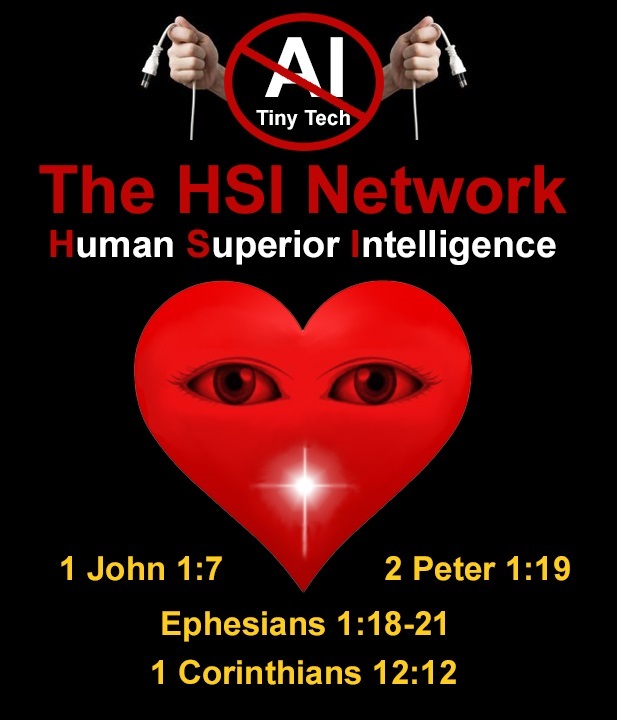
See Also:
Understand the Times We are Currently Living Through
The Demonic Roots of Christianity: The Christians Jesus Said He Hated
Who are God’s “Chosen People”?
Life in the Spirit versus the Religious Life in the Flesh
KABBALAH: The Anti-Christ Religion of Satan that Controls the World Today
Christian Teaching on Sex and Marriage vs. The Actual Biblical Teaching
Exposing the Christian Zionism Cult
The Bewitching of America with the Evil Eye and the Mark of the Beast
Jesus Christ’s Opposition to the Jewish State: Lessons for Today
Identifying the Luciferian Globalists Implementing the New World Order – Who are the “Jews”?
The Brain Myth: Your Intellect and Thoughts Originate in Your Heart, Not Your Brain
The Seal and Mark of God is Far More Important than the “Mark of the Beast” – Are You Prepared for What’s Coming?
The Satanic Roots to Modern Medicine – The Image of the Beast?
Medicine: Idolatry in the Twenty First Century – 10-Year-Old Article More Relevant Today than the Day it was Written
Having problems receiving our emails? See:
How to Beat Internet Censorship and Create Your Own Newsfeed
We Are Now on Telegram. Video channels at Bitchute, and Odysee.
If our website is seized and shut down, find us on Telegram, as well as Bitchute and Odysee for further instructions about where to find us.
If you use the TOR Onion browser, here are the links and corresponding URLs to use in the TOR browser to find us on the Dark Web: Health Impact News, Vaccine Impact, Medical Kidnap, Created4Health, CoconutOil.com.
Leaving a lucrative career as a nephrologist (kidney doctor), Dr. Suzanne Humphries is now free to actually help cure people.
In this autobiography she explains why good doctors are constrained within the current corrupt medical system from practicing real, ethical medicine.
One of the sane voices when it comes to examining the science behind modern-day vaccines, no pro-vaccine extremist doctors have ever dared to debate her in public.
-
Book – The Vaccine Court, by Wayne Rohde – 240 pages
“The Dark Truth of America’s Vaccine Injury Compensation Program”
FREE Shipping Available!
ORDER HERE!





